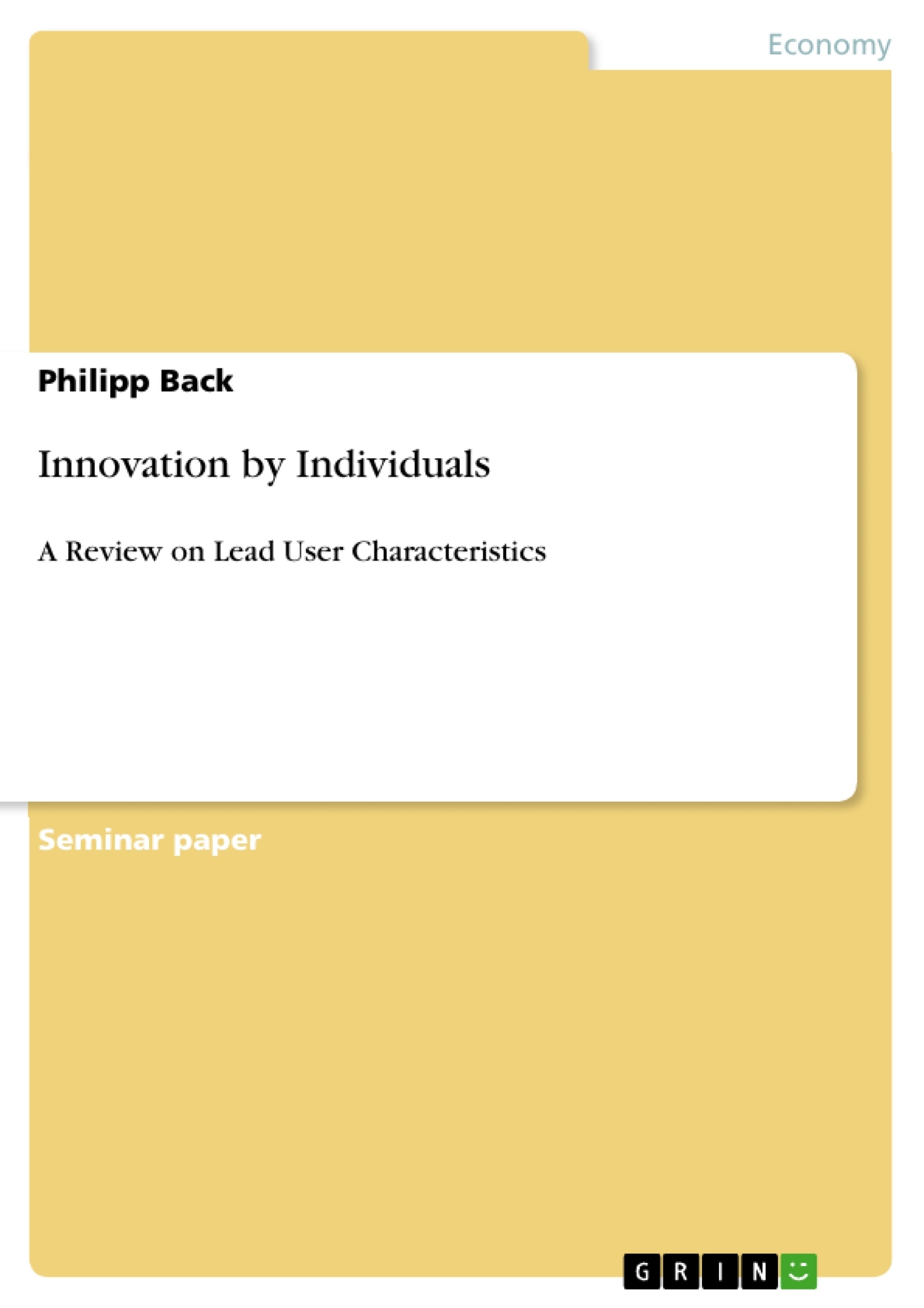Innovation is a crucial success factor as competitive advantage is often gained through the introduction of new products to the market. The challenge thereby is to find the right mix between keeping existing products in the portfolio and introducing innovative new offers. In order to constantly bring innovation forward, companies have to establish an efficient process for development, which generally requires the allocation of many resources to the respective department. Especially for companies operating in the consumer goods or service industry, it is a big challenge to constantly offer innovative products to the market. Moreover, studies revealed a high failure rate of up to 50% for newly lunched products in these business fields. Companies thereby try to reduce failure rates by conducting further market research in order to better meet the needs of their customers. So far, many studies cover the topic of market orientation and its influence on companies’ successes. One aspect of these studies is the integration of customers into the development process. The crucial factor for successful customer integration however is the selection of the right customers for the development program as only a small proportion of the user community is suitable for this task.
It was Eric von Hippel who addressed the problem of selecting the right customers and who introduced the concept of Lead Users. According to him, Lead Users tend to be different compared to ordinary users with respect to certain character traits and are part of a progressive segment within the user community. Since von Hippel presented his Lead User concept, many studies have been conducted to analyze strengths and weaknesses of his idea and many companies have applied his concept in real-life cases to improve their innovation processes. Moreover, other researchers have modified von Hippel’s theory and added further aspects based on personal experiences. The objective of this literature review is therefore to identify, evaluate, and reflect relevant literature about the topic and to present it in an academic way. In this paper, literature on the topic “Innovation by Individuals: A Review on Lead User Characteristics” is reviewed, examined, and analyzed in order to collect not only established characteristics from various sources but also to give background information and useful real-life examples to clarify what defines and drives Lead Users and what makes them special within the user community.
Inhaltsverzeichnis (Table of Contents)
- Introduction
- Problem Definition and Objectives
- Course of Investigation
- Capability
- The Need for New Products
- Being Ahead of the Market
- Cognitive Learning Theory
- Motivation
- Industry and Product Category Level
- Heterogeneity and Homogeneity of Needs
- Intellectual Property
- Innovation Costs
- Individual Level
- Benefit Expectations
- Industry and Product Category Level
- Traits
- Locus of Control
- Innovativeness
- Knowledge
- Usage Experience
- Product Environment-Related Knowledge
- General Technical Knowledge
- Creativity
- Conclusion
Zielsetzung und Themenschwerpunkte (Objectives and Key Themes)
This literature review aims to identify, evaluate, and reflect upon relevant literature on the topic of Lead Users. The paper examines the characteristics and motivations of Lead Users, drawing on established research and real-life examples. It aims to provide an academic overview of what defines and drives these users within the broader user community.
- Characteristics of Lead Users
- Motivations for Lead User participation in innovation
- The role of knowledge and creativity in Lead User behavior
- The impact of Lead Users on product and service innovation
- The application of Lead User principles in real-world contexts
Zusammenfassung der Kapitel (Chapter Summaries)
Chapter two explores the concept of Capability, emphasizing how Lead Users anticipate emerging needs and possess the ability to develop novel solutions. This chapter delves into the diffusion and cognitive learning theories, illustrating the unique needs and capabilities of Lead Users in contrast to ordinary users. Chapter three examines the motivations driving Lead User participation in innovation processes, exploring both industry-level and individual-level factors. It discusses the influence of heterogeneity and homogeneity of needs, intellectual property, and innovation costs on the motivation of Lead Users. Finally, chapter four examines the traits associated with Lead Users, focusing on Locus of Control and Innovativeness, offering a psychological perspective on their characteristics.
Schlüsselwörter (Keywords)
This review focuses on the characteristics and motivations of Lead Users in the context of innovation. Key themes include Capability, Motivation, Traits, Knowledge, Creativity, and the role of Lead Users in product and service development. The work draws upon established research by authors like von Hippel and investigates the practical application of Lead User principles in real-world innovation processes.
- Citar trabajo
- Philipp Back (Autor), 2012, Innovation by Individuals, Múnich, GRIN Verlag, https://www.grin.com/document/265187



